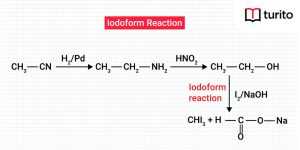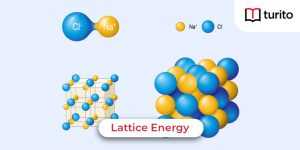What Is Sulfuric Acid?
Sulphur forms many oxoacids such as H₂SO₃, H₂S₂O₃, H₂S₂O₄, H₂SO₅, etc. Some of them are stable, while some of them are unstable and can’t be isolated. These oxoacids of sulphur exist in the aqueous form or the form of their salts.
Sulfuric acid is one of them. Of all oxoacids of sulphur, it is the most important acid. Sulfuric acid is sometimes also known as dihydrogen sulphate, oil of vitriol, mattling acid, battery acid, dipping acid, and many other names depending on sulphuric acid use. In ancient days, sulfuric acid was called ‘oil of vitriol’ as it was prepared by distilling green vitriol (ferrous sulphate), FeSO₄.7H₂O.

Sulfuric Acid Structure (H2SO4)
It is a dibasic acid, and therefore, it contains two OH groups. Both of these groups are attached directly to the S-atom. Hence, sulfuric acid, H₂SO₄, can also be represented by the formula (OH)₂SO₂. The presence of two OH groups is verified by the fact that when H₂SO₄ reacts with PCl₅, two OH groups present in the H₂SO₄ molecule are replaced by two Cl-atoms. As a result, sulfuryl chloride (Cl₂SO₂) is obtained. Many other reactions can confirm the presence of two OH groups directly attached to the S-atom in the structure of H₂SO₄.
Based on these facts, there are two structures of H₂SO₄: one having two double bonds and the other having two coordinate bonds.


It is assumed that these two structures of the H₂SO₄ molecule stay in resonance. Sulfuric acid has a tetrahedral structure, in which sulphur is sp³ hybridised with an oxidation state of +6.
Manufacture of Sulfuric Acid
Nowadays, the manufacturing of sulfuric acid uses two processes. These are
1. Lead Chamber Process:
In this process, sulfuric acid is formed when the mixture of SO₂, air, and NO is treated with steam (H₂O). In this process, NO acts as a catalyst.
The chemical reaction takes place as
2SO₂ + O₂ (from air) + 2H₂O + [NO] → 2H₂SO₄ + [NO]
2. Contact Process:
This process involves the following steps:
- Step 1: Preparation of SO₂.
S + O₂ → SO₂
- Step 2: Oxidation of SO₂ to SO₃.
2SO₂ + O₂ ⇌ 2SO₃
This reaction takes place in the presence of a catalyst. It can be Pt-asbestos, V₂O₅, or Fe₂O₃.
- Step 3: Dissolution of SO₃ in 98% H₂SO₄.
SO₃ + H₂SO₄ → H₂S₂O₇
- Step 4: Dilution of oleum by water.
H₂S₂O₇ + H₂O → 2H₂SO₄
Properties of Sulfuric Acid
- Pure sulfuric acid is a colourless, dense, heavy, and syrupy oily liquid.
- It has a density of 1.84 at 15℃, which does not fume.
- Its boiling point is 340℃, and its colourless crystals melt at 10.38℃.
- The H-bonding between sulfuric acid molecules shows a high boiling point and viscosity.
- It is highly soluble in water. And when water is added to it, it shows a highly exothermic reaction.
- It is a quality conductor of electricity and heat.
- It is extremely corrosive to tissues and metals. Hence, sulfuric acid on the skin produces burns.
- It will burn wood and other organic substances on contact but does not cause a fire.
- High concentrations of sulfuric acid can result in severe health effects from inhalation.
Chemical Properties of Sulfuric Acid
1. Dissociation:
H₂SO₄, when heated, undergoes dissociation into steam (H₂O) and SO₃.
H₂SO₄ ⇌ H₂O + SO₃
2. Acidic nature:
The aqueous solution of the acid behaves as a strong dibasic acid since it ionises in two stages and gives two H⁺ ions. For instance,
H₂SO₄ ⇌ 2H⁺ + SO₄⁻
3. Oxidising agent:
Hot concentrated sulfuric acid acts as a powerful oxidising agent. It is due to the reason that H₂SO₄ can lose nascent oxygen quite readily. When H₂SO₄ oxidises any substance, it is reduced to SO₂. These oxidising properties are not possible with diluting H₂SO₄.
H₂SO₄ → H₂O + SO₂ + [O]
4. Dehydrating agent:
Concentrated H₂SO₄ dissolves in water and forms sulfuric acid hydrates, H₂SO₄.nH₂O. Due to this property, concentrated H₂SO₄ shows dehydrating properties. For instance,
(COOH)₂ + H₂SO₄ → CO + CO₂ + [H₂SO₄.H₂O]
5. Precipitation reaction:
When the aqueous solutions of calcium, barium, lead, etc. salts are treated with dilute H₂SO₄, white precipitates of their corresponding metal sulphates are formed. For instance,
BaCl₂ + H₂SO₄ → BaSO₄ ↓ + 2HCl
6. Electrolysis:
When 50% H₂SO₄ is electrolysed, peroxydisulfuric acid (H₂S₂O₈) is obtained at the anode in the solution.
7. Action on salts:
H₂SO₄ is a strong acid that decomposes the salts of more volatile acids such as carbonates, sulfites, nitrates, chlorides, etc. The more volatile acid is liberated in each case. For instance,
2NaCl + H₂SO₄ → Na₂SO₄ + 2HCl
Neutralising Sulfuric Acid
The neutralising sulfuric acid process should be done with great care and precautions. You can follow the given steps below. These can aid in neutralising sulfuric acid.
- Pour baking soda directly into the places where sulfuric acid gets spilt.
- Do not add water to the concentrated sulfuric acid areas. It will deteriorate the conditions.
- To neutralise sulphuric acid, use strong bases like NaOH. But do not use its solution, as it will cause a bigger spill.
- In the spill areas, pour enough crushed ice.
- If it is spilt on your clothes, remove them as soon as possible and wash them under running water.
Uses for Sulfuric Acid
Sulfuric acid is used at home as well as in industries for various purposes. Because of the varied uses of sulfuric acid, it is often called the ‘king of chemicals.’ Some of the commercial uses of sulfuric acid are
- It is used to manufacture various fertilisers like (NH₄)₂SO₄, amorphous, ammoniated phosphate sulphate, superphosphate of lime, K₂SO₄, etc.
- It manufactures other acids such as HCl, H₃PO₄, HNO₃, etc.
- It is used in manufacturing explosives such as nitroglycerine, trinitrotoluene (TNT), picric acid, gun cotton, dynamite, etc.
- Sulfuric acid manufactures many chemicals like alums, metal sulphates, ethers, phosphorus, Na₂CO₃, etc.
- It is employed in the refining of petroleum.
- It is used in many metallurgical processes for the purification of metals.
- Sulfuric acid aids in manufacturing coal tar, dyes, and several drugs and disinfectants.
- It assists in the textile, paper, and dyeing industries.
- It helps in the leather industry for tanning.
- It is used for cleaning metals before electroplating, enamelling, galvanising, etc.
- It is used in storage batteries.
Sulfuric Acid Uses at Home
For commercial purposes, sulfuric acid is used at home. Some of the common sulfuric acid uses at home are
- It is found in car batteries.
- It is used in some drain cleaners.
- It is an additive in powdered laundry hand soap, detergents, pet products, and dishwashing liquid.
- It is commonly found in household cleaning products, such as products to clean aluminium.
Conclusion
Sulphuric acid is the most common acid. It is highly used in various chemical experiments, industries, and homes. It is employed to make various compounds required by almost every industry. It is a strong inorganic acid.
If used with care, it can be beneficial. But, without precautions, it can be detrimental to you. It can cause severe health issues or even lead to death. So, it is advised to use it with proper care and precautions and under the supervision of experts.
Frequently Asked Questions
1. What are the detrimental effects of sulfuric acid?
- Some of the detrimental effects of sulfuric acid are
- Sulfuric acid (H₂SO₄) is a corrosive matter that is destructive to the eyes, skin, lungs, and teeth.
- Acute exposure can result in death.
- Concentrated H₂SO₄ can catch fire or explode when it comes into contact with many chemicals.
2. When water is added to sulfuric acid, the process becomes exothermic. Why?
A. When water is poured into the acid, a large amount of heat is produced. Hence, the temperature rises to 120℃. The heat generated is so large that the acid spurts out of the container. Therefore, if the acid is diluted, it should be added to water slowly with constant stirring and not water to the acid.
3. At what places are workers at risk of being exposed to sulfuric acid?
A. Some of the places where workers are at risk are
- Mechanics who lift dirty batteries.
- Outdoor workers work in areas where oil, coal, or gas is burned.
- Workers in printing, publishing, or photography shops.
- Contractors and plumbers who come in connection with toilet pot cleaners mixed with water.
- Steelworkers and firefighters who are exposed to acid mists.
4. What does sulfuric acid on the skin cause?
A. The effects of sulfuric acid on the skin are given below:
- It can cause pain, burns, redness, and blistering.
- A large amount of sulfuric acid on the skin can result in permanent scarring.
- It can even cause death if severely exposed.
- It can cause dry, red, cracked skin (dermatitis) following skin contact.

Relevant Articles
Butanoic Acid – Structure, Properties, Uses
Butanoic Acid The carboxylic acid, butanoic acid, has the structural …
Butanoic Acid – Structure, Properties, Uses Read More »
Read More >>What is Iodoform? Characteristics and Uses
Iodoform The formula for Iodoform is CHI3. It is biotic …
What is Iodoform? Characteristics and Uses Read More »
Read More >>Lattice Energy – Explanation, Factors & Formulas
Lattice Energy Lattice energy evaluates the intensity of the ionic …
Lattice Energy – Explanation, Factors & Formulas Read More »
Read More >>Lead Acetate – Definition, Properties, Uses
Lead Acetate Have you ever licked lipstick when you sketch …
Lead Acetate – Definition, Properties, Uses Read More »
Read More >>




















Comments: